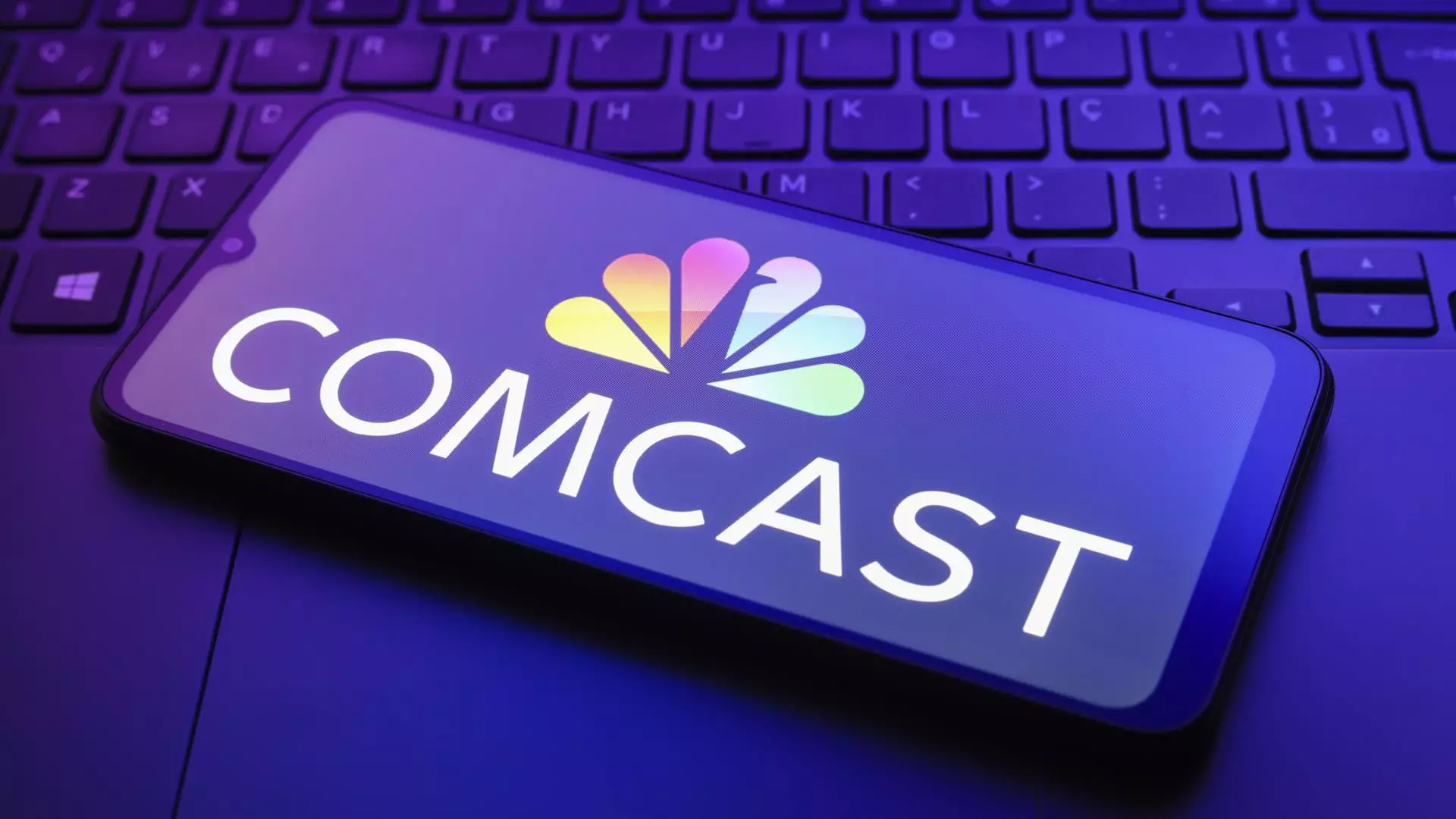In an era where the advertising landscape is continuously shifting, Comcast’s latest initiative, Universal Ads, aims to reshape how smaller businesses engage with premium video content. With traditional television viewership waning in favor of digital platforms, this innovative advertising solution strives to attract a diverse array of advertisers, particularly those who have historically relied on social media services.
Announced just before the annual CES tech conference in Las Vegas, Universal Ads represents Comcast’s strategic response to an evolving advertising economy. The new platform allows businesses, particularly small and medium-sized enterprises (SMEs), to purchase advertising slots across a wide array of premium streaming services offered by Comcast and its partners. With notable names like NBCUniversal, A+E, and Paramount already on board, Comcast is building an extensive network for potential advertisers.
Mark Marshall, Chairman of Global Advertising and Partnerships at NBCUniversal, emphasized the intention behind Universal Ads, stating that the platform aims to create new demand among advertisers who traditionally haven’t partnered with Comcast. This move is a calculated attempt to bridge the gap between the simplicity of digital ad buying and the complex nature of traditional television advertising.
One of the core issues that the Universal Ads platform aims to address is the cumbersome nature of purchasing ad time on traditional media. James Rooke, President of Comcast Advertising, highlighted the contrast between digital platforms—which have streamlined the purchasing process—and traditional advertising methods, which can be prohibitively intricate and daunting for smaller advertisers.
By mimicking the ad-buying mechanics seen in social media and tech platforms, Comcast hopes to democratize access to premium advertising opportunities. This is particularly compelling when considering the frustrations that SMEs have traditionally faced when trying to access these markets. The integration of free, automated artificial intelligence tools further enhances this initiative, alleviating the challenges of ad creation for small businesses with limited resources.
Universal Ads comes at a time when advertisers are increasingly seeking alternatives to the prevailing dominance of tech giants like Meta and YouTube. Rooke’s observations reveal a growing desire among advertisers to diversify their platforms, moving beyond the constrained ecosystems offered by a handful of major technological players.
Despite the traditional reach of television advertising, it often struggles to match the scale and efficiency found in digital marketing, especially when large-scale platforms boast millions of advertisers. For example, Meta has over 10 million active advertisers, while NBCUniversal sits in the thousands—an alarming statistic for any traditional media company.
Though Universal Ads presents a promising solution, it arrives amidst a challenging backdrop for traditional media. As television viewership declines, consumers increasingly turn to streaming services and social media for content consumption. According to Nielsen, platforms like YouTube have dramatically increased their share of viewing time, particularly among younger demographics who are leaning heavily into social media applications such as TikTok.
Nevertheless, while traditional media must adapt, there remains a significant opportunity for advertisers wanting to leverage the nostalgic connection and brand association that comes with live events and programming. Sports telecasts, for example, continue to draw hefty ad dollars, showcasing that there is still a robust market for traditional advertisements.
The industry’s shift toward connected television and streaming provides fertile ground for Universal Ads to thrive. Executives across various firms, including DirecTV and Warner Bros. Discovery, express hope that this platform can empower smaller businesses to make meaningful connections with consumers through premium content.
“Empowering SMEs to connect with audiences through premium content aligns perfectly with the growing demand for flexibility in ad buying,” said Ryan Gould, emphasizing the transformative potential Universal Ads holds for the market.
As we look ahead, it is essential to understand that the advertising landscape continues to evolve rapidly. Comcast’s Universal Ads symbolizes a pivotal shift in how traditional advertising may adapt to these changes—giving power back to smaller businesses while meeting the demands of the modern consumer.
If successful, Comcast’s initiative has the potential to increase competition in the advertising market, nurturing a healthier ecosystem for both advertisers and platforms. As SMEs continue to search for avenues beyond social media, Universal Ads stands poised to fill that gap, proving that traditional media still has a place in the hearts and minds of advertisers. The future of advertising may be bright for Comcast, but its success will heavily depend on the execution of this strategy and its ability to adapt to an ever-challenging competitive landscape.

